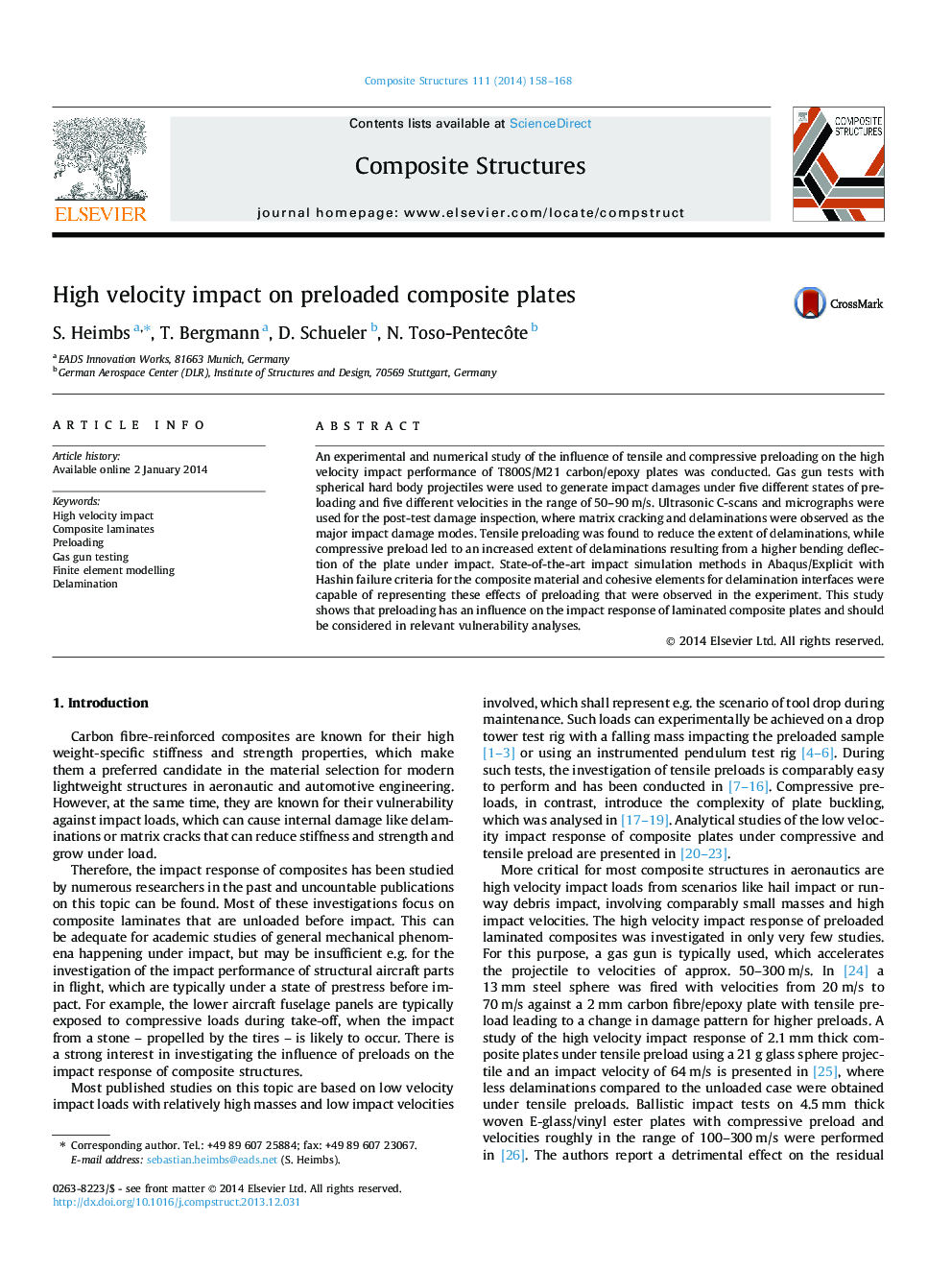| Article ID | Journal | Published Year | Pages | File Type |
|---|---|---|---|---|
| 6707843 | Composite Structures | 2014 | 11 Pages |
Abstract
An experimental and numerical study of the influence of tensile and compressive preloading on the high velocity impact performance of T800S/M21 carbon/epoxy plates was conducted. Gas gun tests with spherical hard body projectiles were used to generate impact damages under five different states of preloading and five different velocities in the range of 50-90Â m/s. Ultrasonic C-scans and micrographs were used for the post-test damage inspection, where matrix cracking and delaminations were observed as the major impact damage modes. Tensile preloading was found to reduce the extent of delaminations, while compressive preload led to an increased extent of delaminations resulting from a higher bending deflection of the plate under impact. State-of-the-art impact simulation methods in Abaqus/Explicit with Hashin failure criteria for the composite material and cohesive elements for delamination interfaces were capable of representing these effects of preloading that were observed in the experiment. This study shows that preloading has an influence on the impact response of laminated composite plates and should be considered in relevant vulnerability analyses.
Related Topics
Physical Sciences and Engineering
Engineering
Civil and Structural Engineering
Authors
S. Heimbs, T. Bergmann, D. Schueler, N. Toso-Pentecôte,
